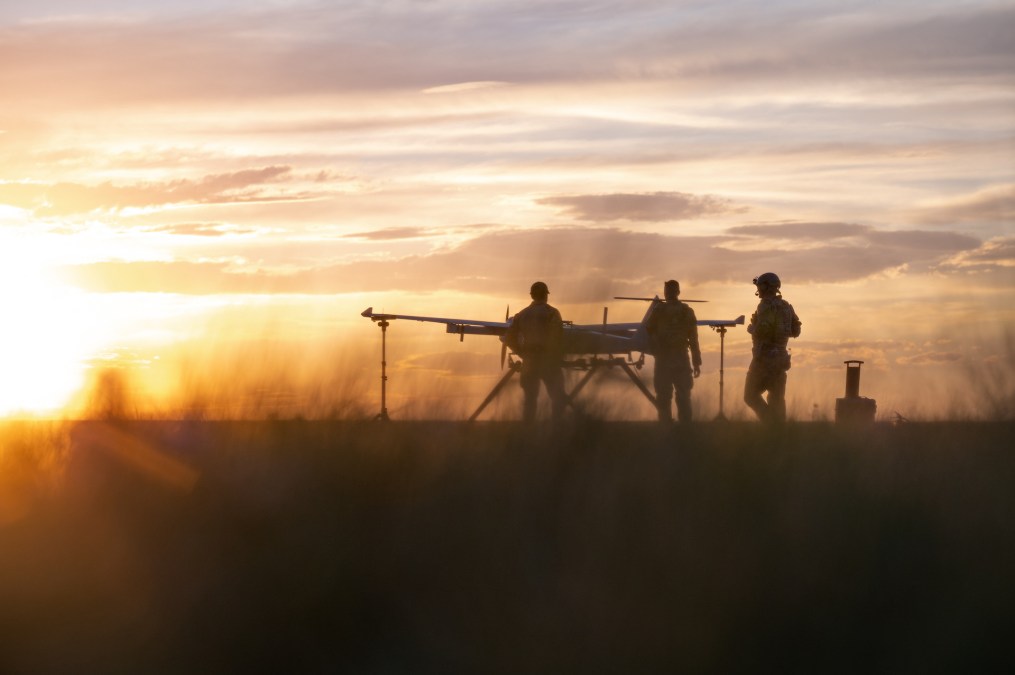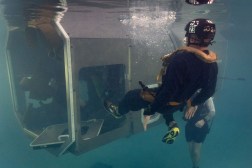SOCOM awards Anduril $86M contract for autonomy software integration

U.S. Special Operations Command has tapped Anduril to help the organization develop and deploy autonomy software that can coordinate the operations of a variety of drones and other robotic platforms on the battlefield, the company is set to announce Wednesday.
Under the three-year, $86 million deal, the contractor will serve as SOCOM’s “Mission Autonomy Systems Integration Partner,” according to a press release.
So-called “collaborative autonomy” capabilities are on the command’s technology wish list.
The organization’s new strategy document, dubbed “SOF Renaissance,” notes that special ops forces must be early adopters at the Defense Department of innovations in areas such as AI, autonomous systems and cyber to enhance irregular warfare capabilities in complex operating environments.
“AI and uncrewed systems are changing warfare through increased automation and autonomy. This leads to more precise targeting and reduced risk to human personnel. The distinction between optimizing and generative AI is crucial and will be a game changer. Swarms of low-cost drones and remote explosive devices, using AI and autonomy, blur traditional human-machine boundaries on the battlefield. SOF must also use these systems to improve decisionmaking and situational awareness,” officials wrote in the document.
The command wants a variety of uncrewed systems for the air, land and sea domains. Officials are even eyeing robotic platforms that can operate in multiple warfighting domains, such as “multi-domain” micro drones and “Drone in a Box” technologies.
“To achieve the benefits of affordable enterprise capability, operators must be able to task teams of diverse, multi-domain autonomous systems to work together and execute a given mission. This requires mission autonomy software capable of integrating and coordinating multiple vehicles’ control systems, sensors, weapons, and other payloads to synchronize effects on the battlefield,” Anduril stated in a press release announcing the new contract award.
The company is touting its AI-enabled Lattice platform as an enabler of the autonomy software infrastructure that will give commandos the tools to interact and wage war with “teams of diverse autonomous systems” and deliver “coordinated mass effects.”
“As the Mission Autonomy Systems Integration Partner (SIP), Anduril will support USSOCOM in developing their infrastructure, enabling them to integrate, test, validate, and deploy government-owned and commercial mission autonomy software and enabling technology across their robotic platforms,” per the release.
The company plans to “prove out” software in the coming months via a series of demonstrations and integration events ahead of operational fielding.
This isn’t the first time that Anduril has been tapped by the Defense Department to provide these types of capabilities.
Last year, the company was one of three firms selected by the Defense innovation Unit to provide tools to facilitate “the automated coordination of swarms of hundreds or thousands of uncrewed assets across multiple domains in order to improve their lethality and efficiency.”
Anduril is offering its Lattice tech for that effort, which is supporting the Pentagon’s Replicator autonomous systems initiative.
“While these [unmanned] systems are valuable as single agents or swarms of like systems, they are most resilient and effective when they operate in combined teams that can collaborate with other types of systems across domains. Resilient C2 and collaborative autonomy vendors will enhance the effectiveness of these systems by providing user interfaces, collaborative autonomy architectures and software, and network orchestration,” DIU officials wrote in a release when the awards for the Autonomous Collaborative Teaming program were announced last year.






